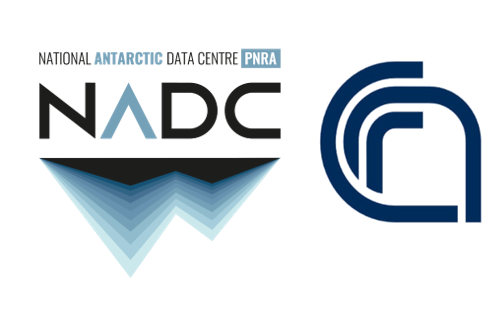RESTORE - Robotic-based invESTigation and mOnitoring of Ross sEa
The RESTORE project is dedicated to the development of portable robotic technologies with the capability to perform multi-disciplinary multi-parametric 3-D monitoring of marine environment. Its primary focus lies in examining critical areas such as the air-sea-ice and water-sediment interfaces in Antarctica. This endeavour aims to support various research aspects, including the study of microbial ecology and DNA tracing, as well as the investigation of Antarctic geology, particularly the dynamics surrounding glaciers and ice-covered coastal regions. Furthermore, RESTORE is committed to scrutinising the impacts of climate change on the Antarctic atmosphere and the exchanges that occur between the sea and air.
The comprehensive dataset collected during RESTORE will provide researchers with a holistic perspective on an extreme and remote environment such as Antarctica, facilitating the interpretation of atmospheric and oceanic dynamics at the interface zones and, the 3D mapping of the underwater environment and the physical characterisation of the sampled region.
Simple
- Date (Creation)
- 2022-12-05T10:29:00
- Identifier
- https://antarcticdatacenter.cnr.it/geonetwork/srv/api/records/7cdf80c2-23b4-4379-b6bb-6fc9b86296b5
- Purpose
-
The primary purpose of the project RESTORE is to develop groundbreaking technology capable to perform in the most challenging surrounding on Earth.
The 2022-2023 XXXVIII Italian Expedition to Antarctica saw the deployment of the PROTEUS unmanned marine vehicle (UMV) for multi-disciplinary scientific surveys in the Ross Sea. Developed by the CNR-INM Marine Robotics research group, PROTEUS - Portable RObotic TEchnology for Underwater Surveys – is compact, modular, adaptable, and it is characterised by an open-source architecture, making it ideal for extreme polar environments.
A remarkable feature of PROTEUS is its shape-shifting ability, transforming from a remotely operated vehicle (ROV) for underwater exploration to an unmanned semi-submersible vehicle (USSV) and even an unmanned surface vehicle (USV) for different survey requirements. Initially, during the Antarctic expedition, PROTEUS operated underwater in ROV configuration, conducting a multi-sensor 3D mapping of Tethys Bay in East Antarctica, accessed through seven ice-drilled holes.
Then, PROTEUS adapted to a USSV, facilitating data collection near the Campbell Glacier tongue. An additional winch allowed the deployment of a multi-parametric sensor probe and a water sampler down to 100 meters. PROTEUS was then transported via helicopter to Tarn Flat, demonstrating its limnological versatility by performing a multi-parametric data survey and complete bathymetry of a lake.
Lastly, PROTEUS transformed into a USV for surface operations. This configuration ensured stability and facilitated the collection of the superficial micro-layer of seawater using a Harvey cylinder. An automated hydraulic system with water containers, remotely controlled pumps, and valves enabled sampling just below the sea surface.
Thanks to PROTEUS's versatility and open architecture, an array of sensors captured various bio-geo-chemical and physical water column parameters, acoustic and video data of ice and seabed. These datasets, processed for accessibility and reusability, align with the FAIR (Findable, Accessible, Interoperable, and Reusable) data principles, supporting the UN Ocean Science Decade's objectives.
In conclusion, the PNRA RESTORE project's utilization of the PROTEUS UMV in the Ross Sea showcased its effectiveness as a versatile robotic tool for scientific exploration in challenging and inaccessible polar environments, providing a wealth of invaluable data for the scientific community.
- Status
- Completed
- Maintenance and update frequency
- As needed
-
SCAR Gazetteer of Antarctica
-
-
Campbell Glacier Tongue
-
Tarn Flat
-
Tethys Bay
-
-
GEMET - INSPIRE themes, version 1.0
-
-
Atmospheric conditions
-
Hydrography
-
Oceanographic geographical features
-
Sea regions
-
Habitats and biotopes
-
Environmental monitoring facilities
-
-
GCMD - Science Keywords
-
-
MARINE GEOPHYSICS
-
ATMOSPHERE
-
DISSOLVED CARBON DIOXIDE
-
SURFACE WATER
-
SALINITY
-
ENVIRONMENTAL IMPACTS
-
OCEAN HEAT BUDGET
-
SALINITY/DENSITY
-
SEA ICE
-
GEOCHEMISTRY
-
POLYNYAS
-
OCEAN CHEMISTRY
-
OCEANS
-
WATER PRESSURE
-
GLACIERS/ICE SHEETS
-
LAKE/POND
-
OCEAN PRESSURE
-
DATA APPLICATION SERVICES
-
ICE DEPTH/THICKNESS
-
COASTAL PROCESSES
-
DATA INTEROPERABILITY
-
-
GCMD - Providers
-
-
IT/PNRA
-
- Keywords
-
-
polar sciences, oceanography, bathymetry, 3D mapping, technology, marine robotics
-
-
GCMD - Providers
-
-
IT/PNRA
-
IT/CNR/ISE
-
-
PNRA project
-
-
RESTORE PNRA18_00137
-
- Use limitation
- Creative-Commons CC BY-NC-SA 4.0
- Unique resource identifier
- PNRA18_00137
- Association Type
- Part of seamless database
- Initiative Type
- Project
- Unique resource identifier
- 38
- Association Type
- Part of seamless database
- Initiative Type
- Campaign
- Spatial representation type
- Text, table
- Denominator
- 1
- Metadata language
- English
- Character set
- UTF8
- Topic category
-
- Climatology, meteorology, atmosphere
- Environment
- Geoscientific information
- Imagery base maps earth cover
- Oceans
))
- Begin date
- 2022-12-05
- End date
- 2023-01-19 Now
- Unique resource identifier
- WGS84
- Distribution format
-
-
FORMATO_DISTRIBUZIONE_DATI (ASCII, CSV, NetCDF...)
(
1
)
-
FORMATO_DISTRIBUZIONE_DATI (ASCII, CSV, NetCDF...)
(
1
)
- OnLine resource
- RESTORE - PNRA project ( WWW:LINK-1.0-http--link )
- Hierarchy level
- Dataset
Domain consistency
Conformance result
- Date (Creation)
- 2022-12-05T10:29:00
- Explanation
-
This data set is conformant with the INSPIRE Implementing Rules for the interoperability of spatial data sets and services
- Pass
- No
- Statement
-
This dataset includes all the environmental and robotic data collected during RESTORE project
- File identifier
- 7cdf80c2-23b4-4379-b6bb-6fc9b86296b5 XML
- Metadata language
- English
- Character set
- UTF8
- Hierarchy level
- Dataset
- Date stamp
- 2025-05-12T14:21:02
- Metadata standard name
-
ISO 19115
- Metadata standard version
-
1.0
Overviews

Spatial extent
))
Provided by
